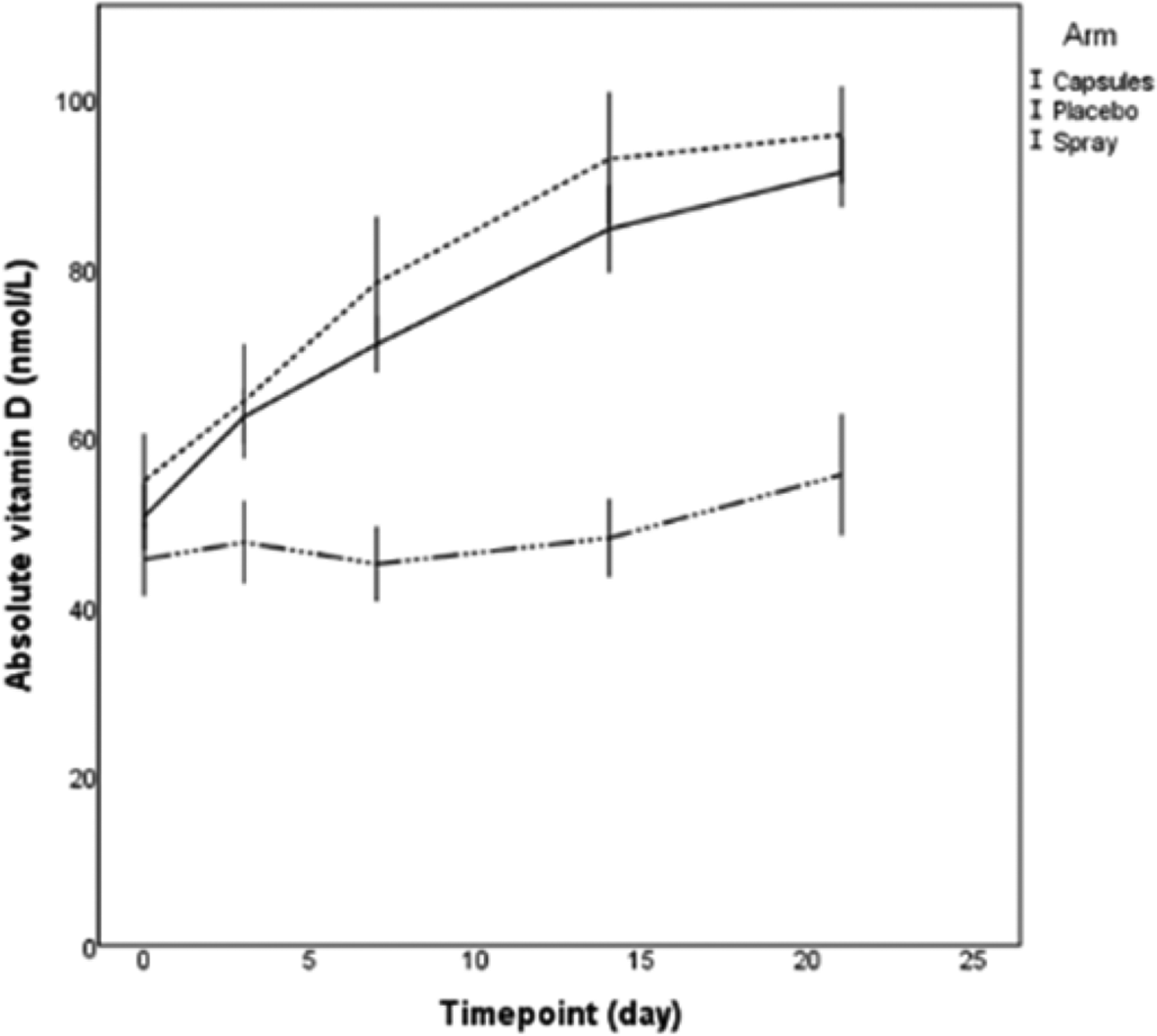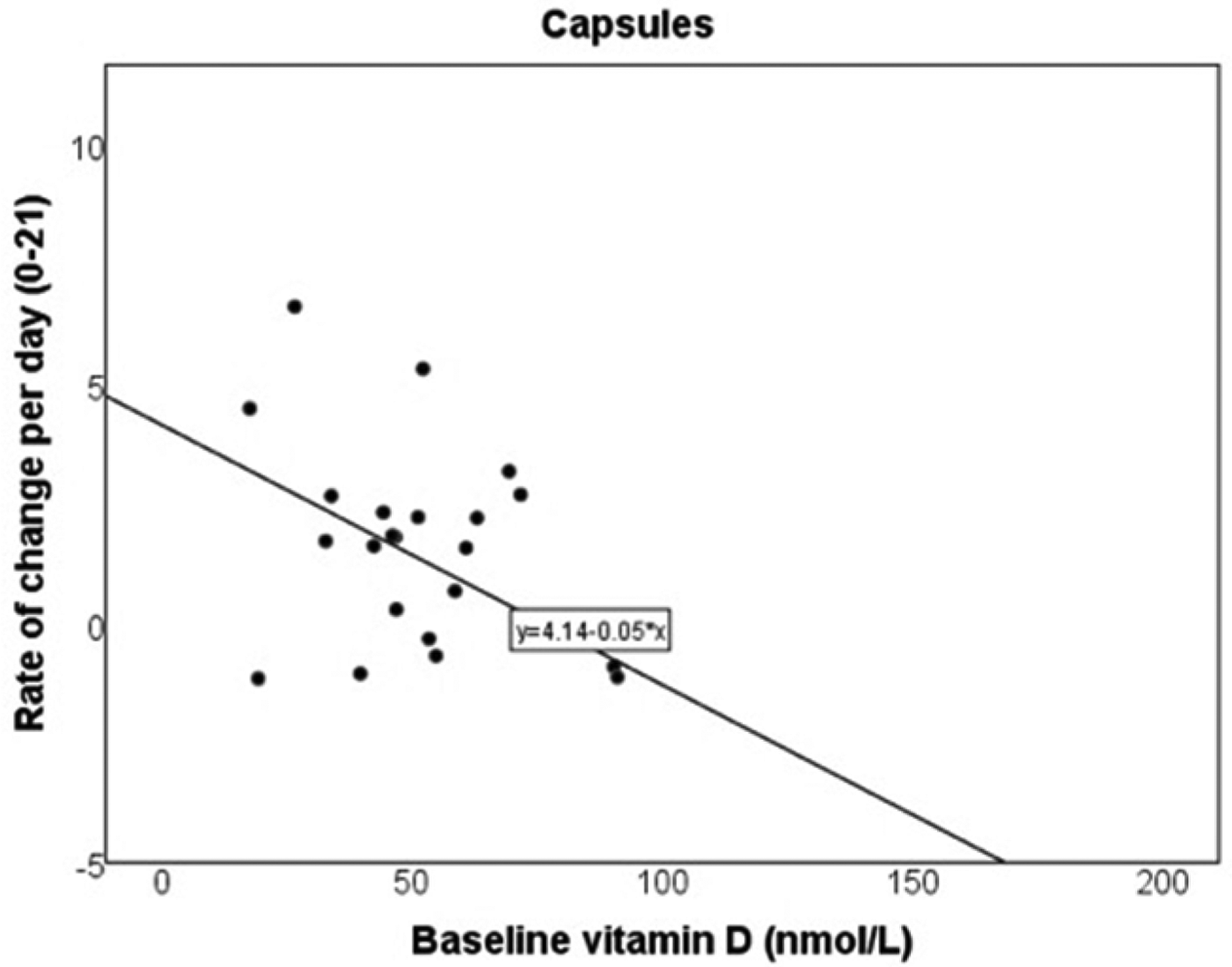Vitamin D is critical for skeletal health and is increasingly associated with other pathologies encompassing gastrointestinal, immunological, psychological effects(Reference Ross, Manson, Abrams, Aloia, Brannon and Clinton1). A significant proportion of the population exhibit suboptimal levels of vitamin D, particularly in Northern latitudes in winter(Reference Lanham-New and Wilson2). Supplementation is advocated, but few data are available on relative efficacy of preparations, or rates of uptake, or whether serum status may influence uptake. Sublingual sprays are an emerging platform for delivery of nutrient supplements, but data on efficacy remains sparse. A randomised, placebo-controlled, 3-arm parallel design study was conducted in healthy volunteers (n = 75) to compare uptake rates of vitamin D supplementation in capsule and sublingual spray preparations over a six-week period between January and April 2017. Serum 25(OH)D concentrations were measured after day 0, 3, 7, 14, 21 and 42 days of supplementation with 3000IU per diem. Baseline measurements show 25(OH)D deficiency, insufficiency and sufficiency in 14·9 %, 44·6 % and 40·5 % of the participants respectively. There was a significant elevation in serum concentrations of 25(OH)D in the treatment arms (capsule p = 0·003, spray p = 0·001) (Fig. 1A) compared to control. The capsule and spray were equally efficacious with average change in serum vitamin D of 2 nmol/ml/day. Correlations between uptake rate and baseline serum vitamin D data suggest that uptake rates are higher in individuals with lower serum vitamin D (Fig. 1B + C) irrespective of delivery platform.

Fig. 1A. Increase in vitamin D over 3 weeks. Grey line - capsules; black line - spray, dashed line, placebo.

Fig. 1B. Rate of change in vitamin D (nmol/ml/day) versus baseline serum vitamin D (nmol/l) in capsule arm.

Fig. 1C. Rate of change in vitamin D (nmol/ml/day) versus baseline serum vitamin D (nmol/l) in spray arm.
In conclusion, a sublingual vitamin D spray is an effective and preferential mode of delivery for supplementation in a healthy population. Achievable rates of vitamin D increment are suggested to be around 2 nmol/ml/day. The data suggest a possible homeostatic mechanism for vitamin D uptake.







